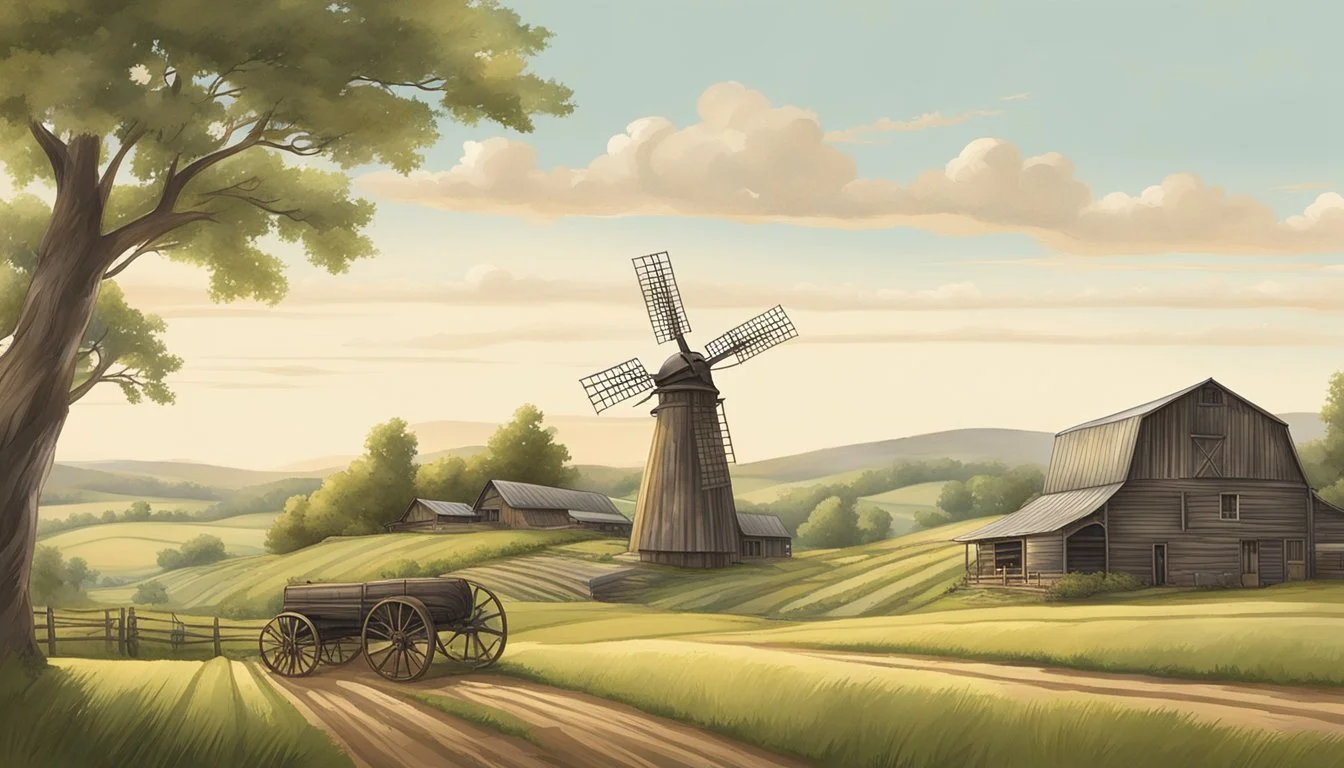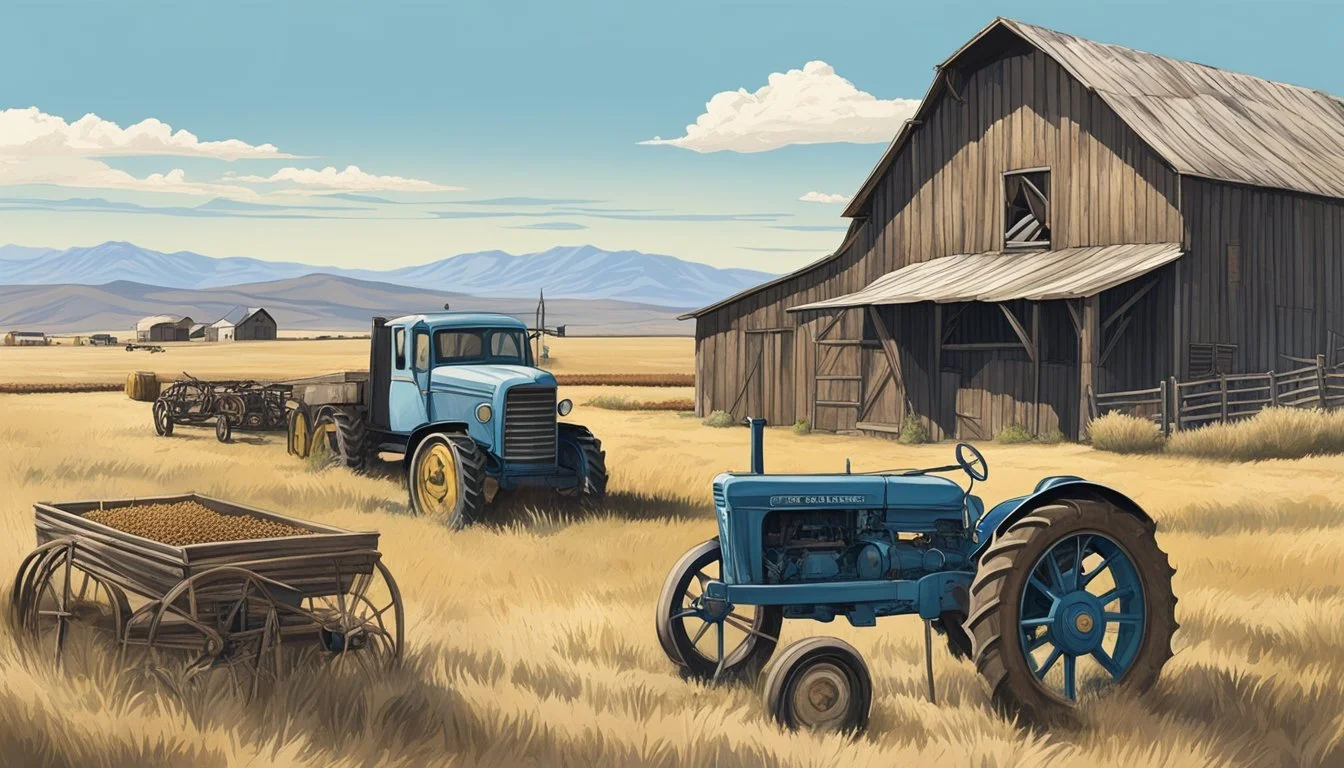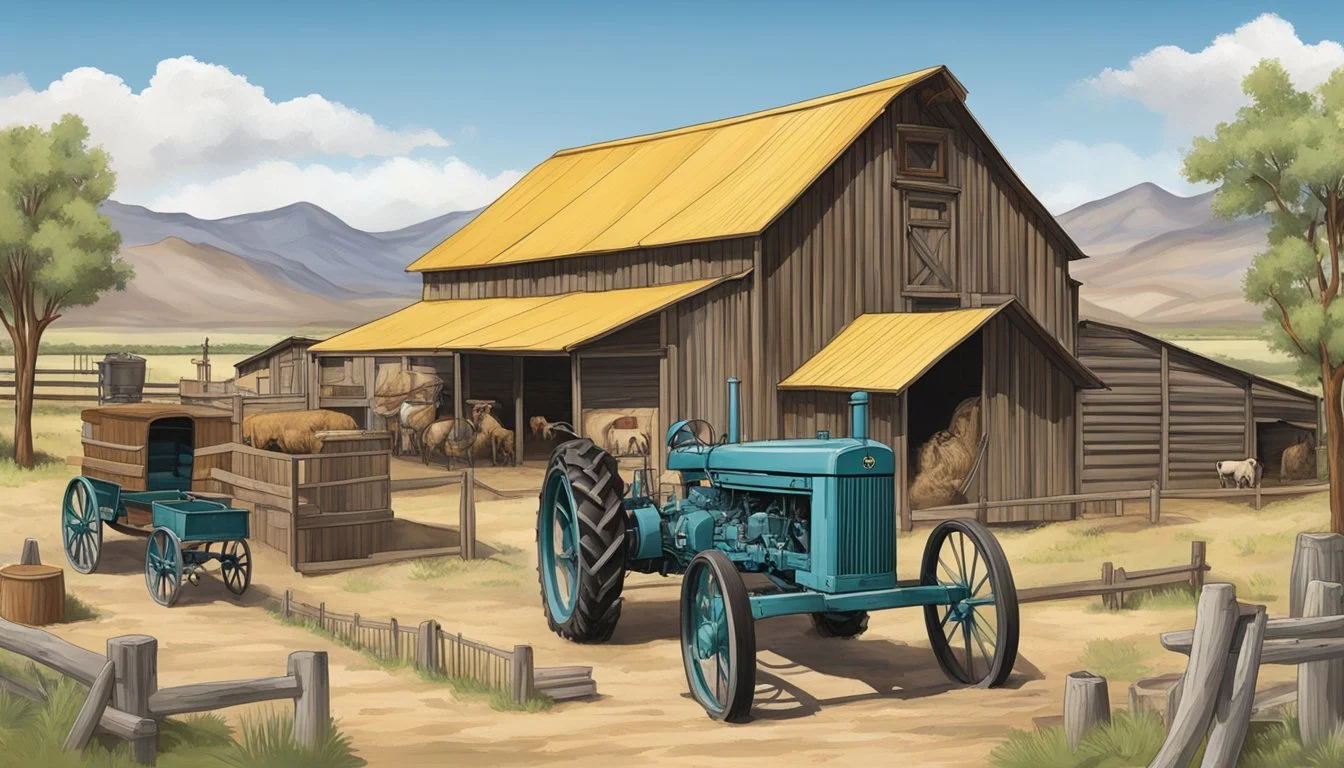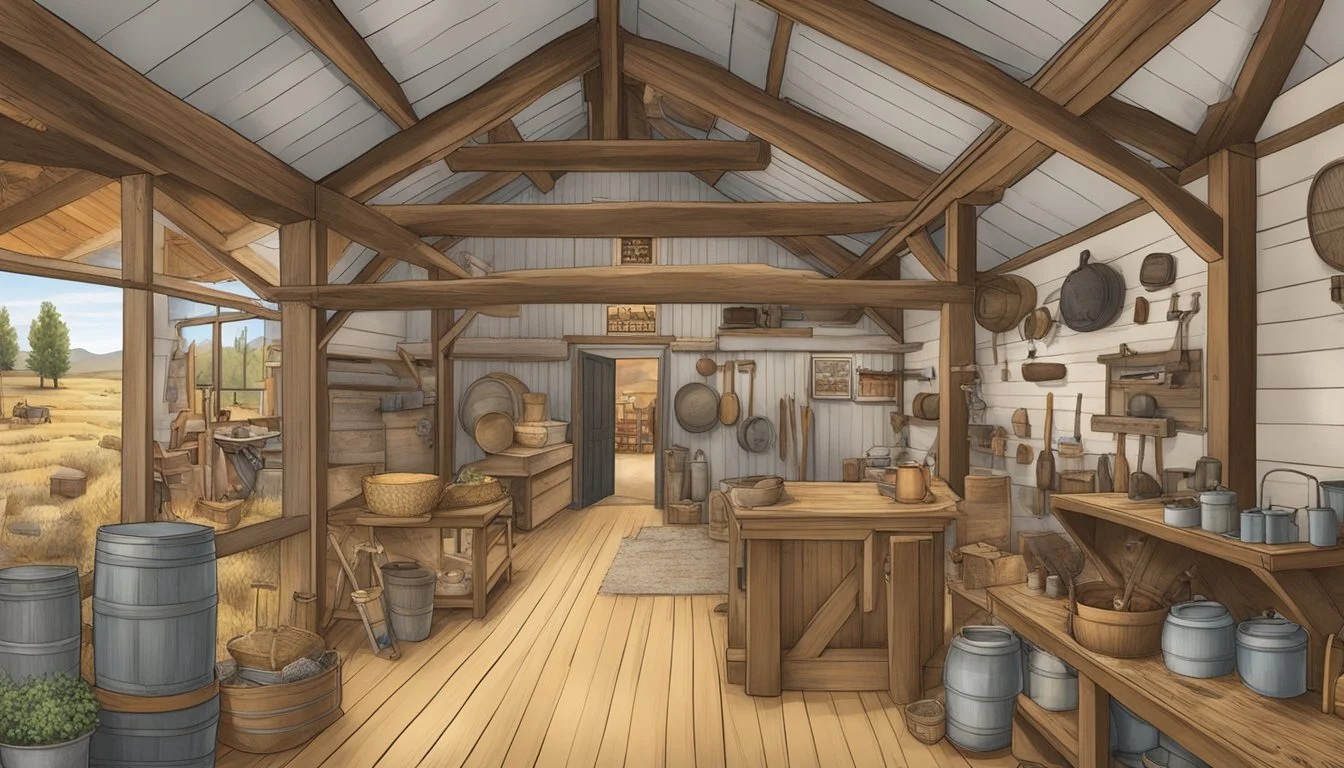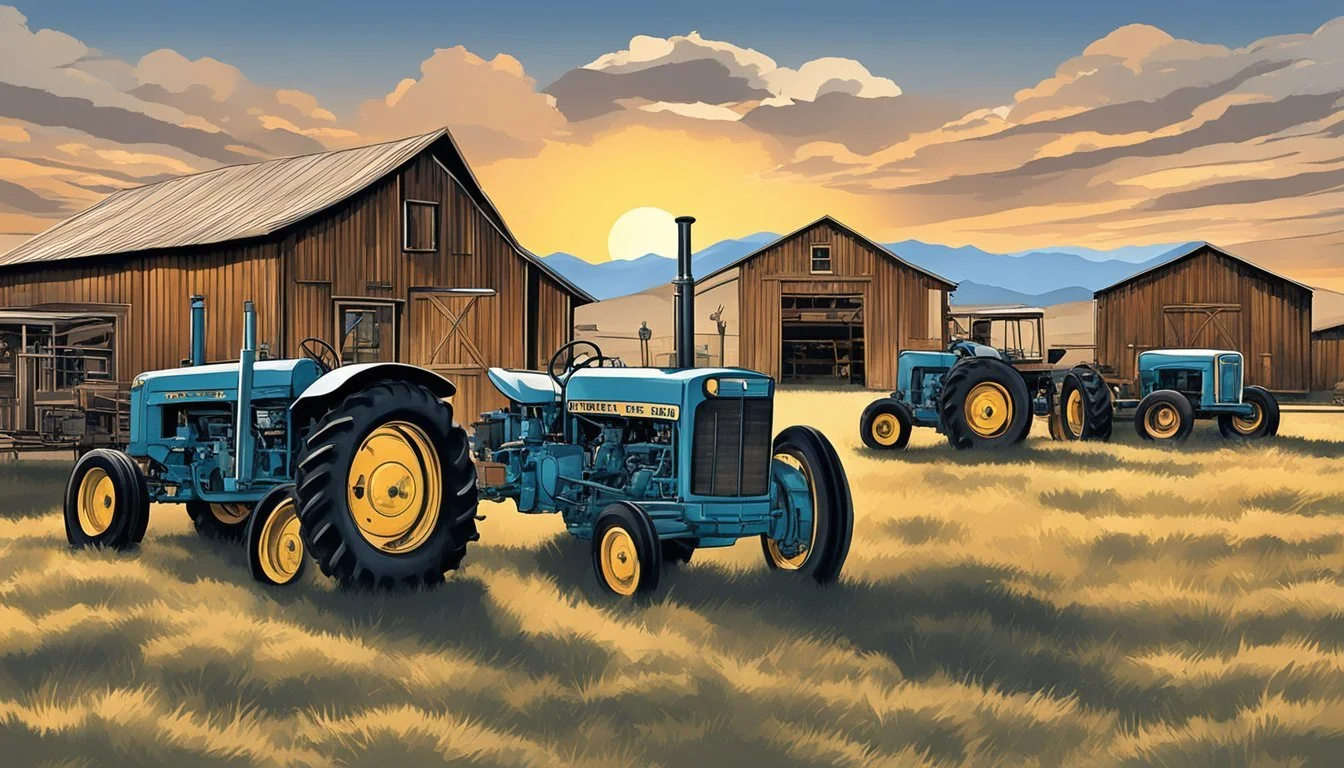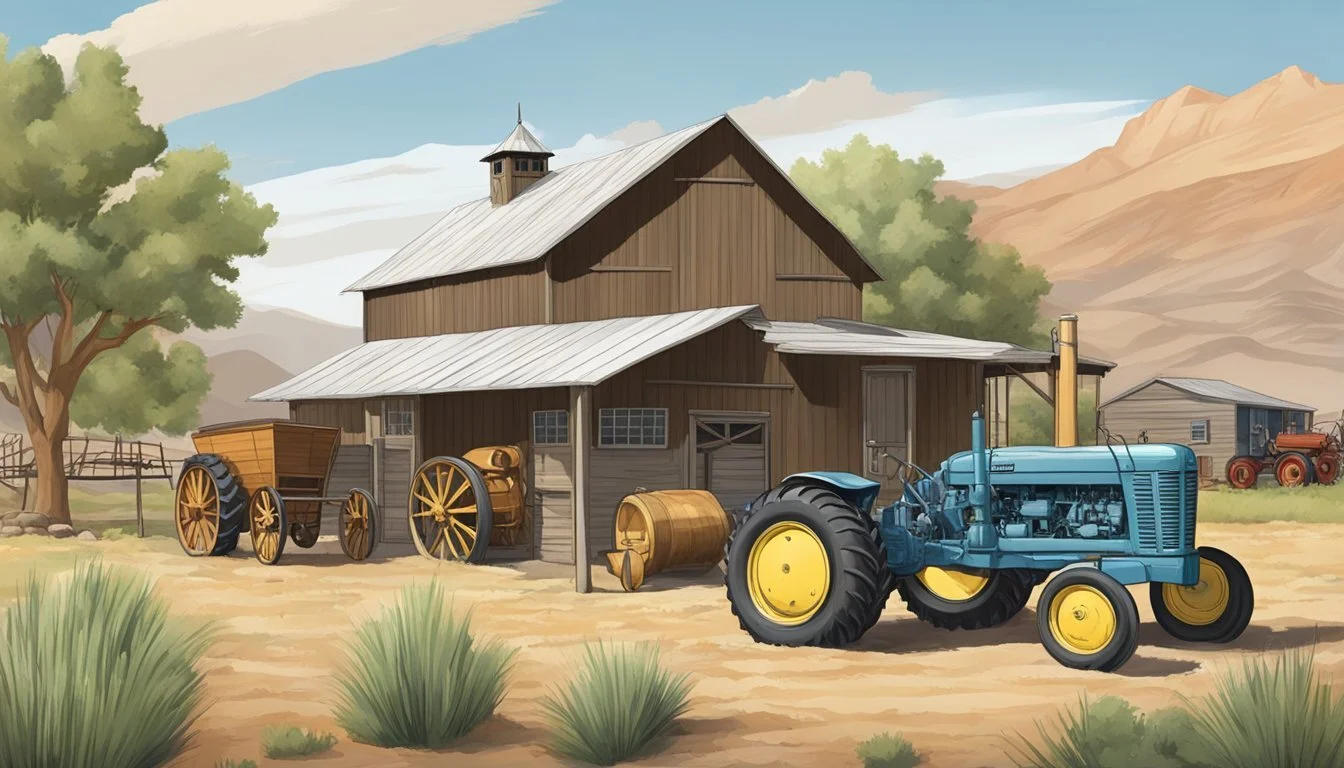Historical Farms and Agricultural Museums in Nevada
Exploring the Silver State's Agrarian Heritage
Historical farms and agricultural museums offer unique insights into the heritage and rural life of Nevada. By preserving and presenting the agricultural practices, equipment, and buildings from the state's past, these institutions play a crucial role in educating visitors about the agricultural history of the region. They provide a tangible connection to the generations of Nevadans who cultivated the land and contributed to the area's development.
Agricultural museums in Nevada, specifically, are dedicated to commemorating the innovations and hard work that fueled the region's economic and cultural growth. They house collections of antique farming equipment, recreate historical farmsteads, and offer demonstrations that depict life on a farm in bygone eras. Visitors to these museums are treated to an immersive experience, bridging the gap between the past and the present.
The state's commitment to honoring its agrarian roots is evident in the care taken to maintain these historical sites. Nevada's historical farms and agricultural museums serve not only as educational resources but also as a tribute to the state's agricultural pioneers. Through interactive exhibits and expertly curated displays, they ensure that Nevada's rich agricultural history is preserved for future generations to appreciate and learn from.
History of Agriculture in Nevada
Agriculture in Nevada extends beyond the glitzy lights of its famous cities, deeply rooted in the state's history from early settlements to the modern age. This historical tapestry weaves together the lives of early settlers, the rippling impact of mining, and the enduring cowboy culture under the Silver State's wide-open skies.
Early Settlements and Farming Practices
The foundation of Nevada's agricultural history began with early settlements in the 1860s, where the home-building and farming instincts of pioneers shaped the Las Vegas Valley and its surroundings. Initial practices involved low-scale, subsistence farming, constrained by the arid climate and water scarcity. These farming practices gradually evolved, adapting to the challenging environment of the region.
Development of the Silver State's Agriculture
Nevada, often referred to as the Silver State due to its rich silver deposits, experienced a transformation in its agricultural pursuits as mining towns sprang up. The mining boom not only stimulated the state's economy but also increased the demand for local agriculture to supply food for the growing population. As a result, Nevada saw a modest expansion in its farming sectors, primarily in areas where water was more accessible.
Ranching and Cowboy Culture
Ranching has been an essential aspect of Nevada's history, with the image of the cowboy emerging as an iconic symbol of the state's heritage. Expansive ranches such as the Wilhelm and William Lampe Ranch received recognition in the Nevada State Register of Historic Places, underscoring their significance. From large-scale cattle drives to rodeos, the cowboy lifestyle permeated Nevada's culture, shaping its identity and community life.
Mining and Its Impact on Agriculture
The interplay between mining and agriculture was unmistakable. While mining dominated Central Nevada's economy with its substantial impact on the landscape, it also demanded a parallel agricultural support system. This necessity spurred innovation in water management and led to a symbiotic relationship where mining-dependent communities also contributed to the state's agricultural stability despite environmental challenges.
Prominent Historical Farms in Nevada
Nevada's landscape is dotted with historical farms that carry the legacy of the state's agricultural past. Visitors can explore these farms to experience the region's rich farming heritage and understand the development of rural communities in the Silver State.
Northern Nevada Farms
In Northern Nevada, the agricultural landscape is marked by farms that have been instrumental in the region’s development. One such farm is the Wilhelm and William Lampe Ranch which, alongside the Louis and Elmer Stodieck Ranch, have been recognized for their historical value and are listed in the Nevada State Register of Historic Places. These farms represent the pioneering spirit and the agricultural foundation that helped to shape the rural communities of Northern Nevada.
Pahrump Valley Historical Farms
Moving to Southern Nevada, the Pahrump Valley is home to farms with a deeply rooted history in the area's development. The Pahrump Valley Museum offers insights into the valley's farming practices, and the Pahrump Historical Society has engaged in preserving the local agricultural heritage. The museum serves as a valuable resource for understanding how farms contributed to sustaining the local community and shaping the valley’s identity. The Pahrump Historical Society captures the essence of perseverance that defined the early settlers and their farms that thrived in the arid Nevada climate.
Key Agricultural Museums and Cultural Centers
Nevada offers a tapestry of museums that not only display its rich agricultural history but also its diverse cultural heritage. These institutions serve as gateways to understanding Nevada's past and present.
Nevada State Museum
The Nevada State Museum in Carson City is a vibrant cultural center where one can explore Nevada's natural and cultural history. A key exhibit, Under One Sky, presents Native American culture alongside a comprehensive display of Nevada's mining and agricultural past. Informative and engaging, the exhibit provides a walk-through of the region’s history from prehistoric times to modern-day conservation efforts.
National Atomic Testing Museum
Although not directly an agricultural museum, the National Atomic Testing Museum in Las Vegas holds significant relevance to Nevada's historical landscape. The museum's exhibits outline the impact of atomic testing in the Nevada desert and indirectly chart the change in land use and its effects on local agriculture. Their collections and interactive displays give visitors insight into an era that reshaped the region's agriculture and ecology.
Nevada Museum of Art
The Nevada Museum of Art in Reno, while primarily focused on art, occasionally features exhibitions that delve into the relationship between art and nature, including agriculture. Thematic exhibitions and interdisciplinary works sometimes explore human interaction with the land, encompassing aspects of farming, water usage, and land cultivation. Their thought-provoking displays encourage a deeper appreciation of Nevada's agricultural roots through the lens of visual arts.
Historical Exhibits and Collections
This section explores the rich tapestry of Nevada's agricultural and industrial past through various historical exhibits and collections. These displays offer a window into the experiences and innovations that shaped the region.
Nevada's Railroad Heritage
The McKeen Motor Car stands as a testament to Nevada's dynamic railroad heritage. Exhibits dedicated to railway history provide a glimpse into the development and impact of the railroads on agriculture and commerce throughout the state. Located in the Nevada State Railroad Museum, visitors can discover restored locomotives and rolling stock that illustrate the state's railroading story.
Mining Artifacts and Exhibitions
Nevada's mining industry, integral to its development, is captured through extensive exhibits of mining artifacts. These exhibitions often feature equipment used in the mining process as well as stories of those who worked in the mines. Authentic devices and tools on display enable visitors to gain a deeper understanding of the mining practices that contributed to Nevada's growth.
Photo Collections and Stories
A picture is worth a thousand words, and in Nevada, photo collections are indispensable in telling the story of its agricultural history. From images detailing the lives of early settlers to photographs of historical farming equipment, these collections provide a visual narrative complemented by engaging stories. The Carson City Mint, for example, is not only a place where coins were made but also serves as a repository of photographic records that connect visitors to the bygone eras of Nevada's development.
Living History and Interactive Experiences
Nevada offers a unique opportunity for visitors to immerse themselves in the past through engaging living history experiences. These settings provide not only a visual backdrop but also interactive avenues for deeper understanding of historical lifestyles and agricultural practices.
Association for Living History, Farm and Agricultural Museums
The Association for Living History, Farm and Agricultural Museums, known as ALHFAM, serves as a beacon for those involved in living historical farms and agricultural museums. In Nevada, this organization has inspired locations to create spaces where history is not just displayed but enacted and felt. Their commitment helps ensure that historical accuracy is preserved and that visitors have enriching experiences.
Docent-Led Tours and Educational Programs
Docent-led tours are integral to the living history experience, guiding visitors through a narrative of the past. These knowledgeable tour guides, often clad in period attire, bring to life the stories embedded within Nevada’s historical sites. Educational programs are tailored for all ages, with hands-on activities that engage history buffs and encourage learning through participation.
Interactive Exhibits for History Buffs
Nevada’s historical farms and museums incorporating interactive exhibits provide a dynamic way for visitors to connect with the past. These exhibits, a draw for #nvmuseums, offer a tactile approach to understanding the agricultural methods and day-to-day activities of earlier times. From navigating historical farm equipment to participating in traditional crafts, the interactive nature of these sites fosters a profound appreciation for Nevada's rich heritage.
Structures of Significance
Nevada's agricultural history is encapsulated in its historic buildings and landmarks, many of which have been preserved as museums. These sites offer an invaluable look into the past, showcasing structures that have withstood the test of time and now serve as testament to the state's agricultural and economic development.
Historic Buildings and Landmarks
In Nevada, the fabric of rural life is displayed in various historic structures that are pivotal to understanding the state's agrarian past. A number of these buildings are preserved and recognized as part of the National Register of Historic Places, ensconcing the heritage that has shaped Nevada's landscape. From barns to homesteads, these structures of significance have a tale to tell, whether it be of pioneering endeavors or ingenious irrigation methods that transformed arid expanses into fertile soil.
The Carson City Mint and State Railroad Museum
One cannot discuss Nevada's heritage without mentioning the Carson City Mint. This facility, once a producer of coins critical to the economy of the growing nation, now stands as a National Historic Landmark and museum. It not only highlights agricultural success but also the economic and industrial advancement that paralleled it.
Adjacent to the history of minting in the state is the State Railroad Museum. The museum preserves and exhibits Nevada's rich railroad history, which was intrinsically tied to the success of both the mining and agriculture industries. The locomotives and exhibitions housed here symbolize the transportation revolution that was central to distributing Nevada's agricultural produce throughout the region.
Planning Your Visit
When planning a visit to Nevada's historical farms and agricultural museums, one should consider the seasonal events and what visitor services are available. This ensures a rewarding and well-informed experience.
Events and Seasonal Offerings
Nevada boasts a range of seasonal events and programs that celebrate its rich agricultural history. The Baker Historic Farm Site often hosts activities that demonstrate farm life from the past, aligning with the harvest seasons. Visitors planning their trip to coincide with these events can witness a living history experience. For those who are closer to Las Vegas or Carson City, local museums also organize temporary exhibits and cultural celebrations that highlight Nevada's agricultural milestones.
Visitor Information and Services
The visitor services provided at historical sites and museums enhance the overall experience. Both the Pahrump Valley Museum and the Nevada State Museum in Carson City offer extensive educational materials and guided tours that share insights into the state's farming and ranching heritage.
Museum Location Visitor Services Offered Baker Historic Farm Guided tours, Picnic areas Pahrump Valley Educational programs, Accessible facilities Carson City Interactive exhibits, Gift shops, Research libraries Las Vegas Area Informational booths, Family-friendly activities
It's important for visitors to check the operational hours in advance since these can vary with the seasons or on special occasions. One should also note that some facilities may require a reservation or an admission fee, so planning ahead is crucial for a smooth visit.
Support and Organizations
Support for historical farms and agricultural museums in Nevada comes through dedicated organizations providing a robust network for professionals and enthusiasts alike. These entities offer opportunities for involvement and education that foster the growth and preservation of agricultural heritage.
Membership and Volunteer Opportunities
Association for Living History, Farm and Agricultural Museums (ALHFAM) serves as a pivotal resource for those interested in the living historical farms and agricultural museums. Membership in this organization is open to both individuals and institutions. It offers access to specialized publications, professional development opportunities, and a supportive community for exchanging knowledge.
Individuals can engage with the organization as members or volunteers, contributing to the living history movement.
Institutions in Nevada can collaborate with ALHFAM to strengthen their programs and outreach.
Educational Outreach and Partnerships
Educational outreach is a fundamental part of preserving Nevada's agricultural past. Various programs are designed to connect the community and especially younger generations with the state's rich farming history.
Nevada Agricultural Foundation actively seeks to promote agriculture through financial support aimed at research and education in the field.
Collaborations with local educational institutions are facilitated to enhance the understanding and appreciation of this sector's contributions to Nevada's history.
By fostering partnerships and offering support, these organizations ensure Nevada's agricultural legacy continues to be an integral part of community education and engagement.
Exploring Modern Agriculture
Nevada's approach to modern agriculture weaves advanced technology with sustainability, reflecting trends seen across the United States. Farmers and producers are adopting new methods to increase efficiency and reduce environmental impact.
Technology in Agriculture
In Nevada, cutting-edge technology is revolutionizing traditional farming practices. Precision agriculture tools such as GPS-guided tractors and drones are increasingly common, enabling farmers to optimize their irrigation and fertilization schedules. The state's farms leverage big data analytics to predict crop yields more accurately and manage resources more efficiently.
Sustainability Initiatives
Sustainability in Nevada's agricultural sector is a growing priority, mirroring a national shift towards more environmentally friendly farming practices. Initiatives include the use of solar energy to power operations and water conservation techniques such as drip irrigation. Farmers are also implementing soil health programs and integrated pest management to reduce the reliance on chemical inputs.

